 The Butterfly Hug is an EMDR technique that can be a grounding resource to help you orient to a space and reinforce a positive resource. Bilateral stimulation helps the brain process experiences and is something that our brain naturally does during deep states of REM sleep. We can intentionally use bilateral stimulation to build upon this organic process in a way to move through an experience with more ease and freedom. Tapping, swaying, running, bouncing - these are all ways to support our mind and body to more effectively move through and complete the stress cycle. Every little bit counts, it is more about consistency than the quantity when starting a new habit. Click here for more free trauma-informed tips and tools and click here to join me this fall for my Ethics of Trauma-Informed Care trainings! May we all love the life we live…
0 Comments
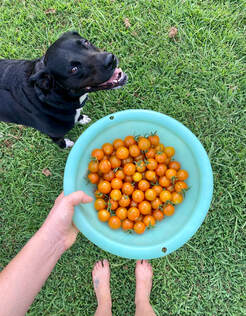 Did you know that getting your hands in the dirt can actually make you happier? 🌿 According to recent studies, gardening isn't just about cultivating beautiful blooms or tasty veggies – it's a fantastic form of self-care that nurtures your mind and soul. Researchers have delved into the psychological benefits of gardening, uncovering a direct connection between digging in the dirt and increased happiness levels. 🌞 In the study “The Therapeutic Benefits of Gardening Activities on Stress and Anxiety”, participants who engaged in gardening activities showed reduced levels of stress and anxiety, along with a notable improvement in mood. 🌻 It turns out that the act of planting, tending, and nurturing plants can activate the release of mood-boosting chemicals in the brain, leaving you feeling refreshed and rejuvenated. Not only does gardening provide an opportunity to escape the stress of daily life, but it also allows you to connect with nature on a deeper level. 🍃 So, why not give yourself the gift of gardening and embrace its therapeutic benefits? Whether you have a spacious garden or a potted plant on a tiny balcony, you can start small and watch the magic unfold. 🌷 For more free trauma-informed tips and tools, click here and join me this fall for my Ethics of Trauma-Informed Care trainings by clicking here. May we all love the life we live…  Staying hydrated is essential for both our physical and mental wellbeing. It also can be an orienting and grounding tool for clients to come back to their bodies when triggered or dissociated. According to the National Institute of Health, dehydration can have impacts on our brain including effects on short-term memory, attention, mood and energy levels. As a therapist, I always have at least 2 beverages in front of me when seeing clients. It helps me come back to my body and feel nourished while I hold space for others. As a client, holding a warm cup of tea or sipping on a cold beverage can be a great way to focus on sensation, the body and present moment. These simple things can help to create a sense of safety and connection with our bodies. Pair this with some deep breathing and we are well on our way to a nervous system shift! These simple resources can go a long way. Also, just a reminder that it's the last week to sign up for my Level 2 Ethics of Trauma-Informed Care training this Friday from 2-4 pm EST! You will receive a recording of the training if you'd prefer a self-paced option. Click here for more information! May we all love the life we live...  Did you know that strengthening your vagal tone can help you recover from an accumulation of stress? Not only that, you can be more content, and improve resiliency for future challenges. But what does the vagal nerve do that is so important to our nervous system? Well, it happens to be a key component of what helps our entire nervous system define if we are okay to feel safe or if we are in danger. By hacking our nervous system with physical and mental choices, we can train it to make this key component not only stronger but to play in our favor to improve our responses and how we handle stressful situations. Stimulating the vagus nerve is key to helping to calm our nervous system and manage stress more effectively. The vagus nerve is our tenth cranial nerve, extending from its origin in the brainstem through the neck and the thorax down to the abdomen, connecting with major bodily organs. It carries an extensive range of signals from the digestive system and organs to the brain and vice versa. The vagus nerve regulates body temperature, heart rate, and functioning, impacts our inflammation within the body, and helps the brain get signals when we are full and should stop eating. For folks with anxiety disorders, PTSD, or autonomic disorders, a vagal nerve massage and vagal nerve stimulation may be helpful. Vagus Nerve Massage: This is a practice you can do at home to stimulate the vagus nerve, help calm the nervous system and build vagal tone. Essentially the vagus nerve is what helps us detect safety in our environment and with others. Improving our vagal tone is key to helping us improve our ability to create this sense of safety. For a full video of a vagus nerve massage, click here. There are a lot of nerve endings for the vagus nerve in the ear, which is where the practice begins. This introduction to Vagus Nerve Massage is a general ear massage practice that can be a helpful foundation to beginning to stimulate the vagus nerve in this way.
This stimulation of the vagus nerve will help us build vagal tone, which is our ability to effectively respond (not over-respond or under-respond) to sensory input. Yoga, meditation, and biofeedback are all ways to begin to build vagal tone. For more resources and videos for building resilience and healing, as well as learn about upcoming classes, you can join my newsletter by clicking here. May we all love the life we live... 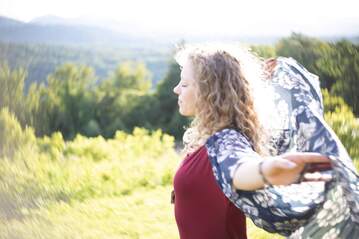 Breathwork is one of the most accessible ways we can regulate the nervous system and build resilience. It's something we can do anytime, anywhere, which I think of as sneaky self-care. There are many breathwork practices to explore but 4:7:8 is a well researched practice to support with emotional regulation, stress management and sleep. A trauma-informed approach to more advanced breathwork practices, like 4:7:8, is to use a stair-step method to build up capacity for breath retention and extension. Using this stair-step method helps to build comfort and confidence within these practices, which is essential to building new habits. Click here for a video of a Grounding Breathwork practice that can be a helpful stair-step to a 4:7:8 breathwork practice. For more trauma-informed tips and resources, join me for my Ethics of Trauma-Informed Care Level 1 & 2 Training this spring! Self-paced and live workshop options available. See the flyer below or click here for more information! May we all love the life we live...  Sleep is one of the greatest tools we have at hand for healing. In the past years, I have shared some simple tools for sleep support, and I have written about the importance of finding rest so we can better manage stress and feel calm within our bodies. Now, I want to go deeper into why sleep matters and how it affects our health. At bedtime, some key parts of the brain work together to regulate sleep. In this process, some genes turn on that help manage restoration and metabolic pathways. It is also a fundamental part of the physical process of neuroplasticity - which is the ability of our brain to change and adapt through lived experiences. When we allow ourselves to have a truly restful sleep, our creativity improves, and so does our capacity to learn new things. Sleep allows us to heal and recover, so we can continue to do all the things we love during our waking hours. Studies show that, in otherwise healthy adults, short-term consequences of sleep disruption include increased stress responsivity, somatic pain, reduced quality of life, emotional distress and mood disorders, and cognitive, memory, and performance deficits. Relaxation techniques before bed have been shown to improve sleep quality and are another common technique used to treat insomnia. Creating a bedtime routine can help signal to the body and mind that all activity is done for the day and it is time to rest. Here are 5 tips to help you create a bedtime routine:
If you want to learn more, I am excited to share that I will be having lots of more resources on sleep, self-care, and burnout prevention coming out soon so please stay tuned for more! To be the first to know, join my newsletter here. May we all love the life we live… Warmly, Becca 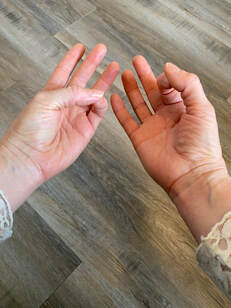 Bilateral stimulation is one of the ways we can help orient ourselves to the present moment and support our nervous system to regulate and ground to create a deeper sense of safety within the body. My favorite bilateral tool to use is called Tip Tap Fingers. This tool can be used to help create space in the mind from triggers and intrusive thoughts. This tool can also help us "keep our lids on" when we feel stressed or triggered. This bilateral brain game can be practiced in the following layers to continue to increase the mental challenge and help build more neuroplasticity in the brain. These tools can help us build resilience and learn to stay checked in with our body for a sense of safety. Tip Tap Fingers:
This past week, I was interviewed by Hannah Levin of Heartfelt Wellbeing where I talk about the practical applications of this tools along with other Yoga for Trauma principles and practices. To see the full interview on Yoga for Trauma, you can click here. For more trauma-informed tools, my Ethics of Trauma-Informed Care training starts on April 29th! You can choose between a live version or self-paced version with lifetime access to the recording. Click here for more information and to reserve a spot today! 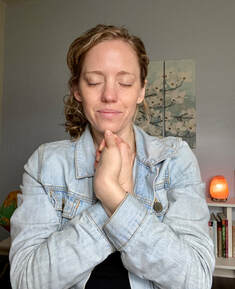 As humans, we are always changing and growing. Using bilateral stimulation is one way to help our brains build new pathways, regulate the vagus nerve and manage stress more effectively. Bilateral healing is utilizing bilateral stimulation through the senses in a rhythmic pattern. Using something that we can hear, see or feel and allowing the brain to process and regulate more effectively. This month I am going to be sharing a series of weekly resources on bilateral healing methods. This week's tool is a bilateral position called The Pretzel (coined by Linda Harrison, LPCS) that when paired with deep rhythmic breathing, can help calm the nervous system and repair the MindBody connection. For a free video of The Pretzel practice, click here. Follow these steps to move into the body position:
It takes 2 minutes for the neurological system to respond by slowing your heart and breath, moving from the sympathetic activated part of your nervous system to the parasympathetic nervous system. Therefore, it is important to rest in this position for at least two minutes. For more trauma-informed resources, you can join my Ethics of Trauma-Informed Care training on April 29th from 9-11 EST! For more information and to reserve your spot, you can click here.  We live in a chronically overstimulated world. For many of us, it is important to focus on creating time to decompress from the day in order to avoid burnout. Often many of us are so exhausted by the end of the day, we will just collapse. If we can take a few moments to consciously decompress, we allow our nervous system a chance to complete the stress cycle and reset. Some decompression practices include:
Not allowing the nervous system time to decompress would be the same as eating nonstop every day - our bodies wouldn’t have time to effectively filter out toxins vs. nutrients. These decompression practices can happen during transitions throughout the day or as a conscious way to unwind in the evening. Whatever you choose, start small. Try to do something for just 2 minutes a day. Every week, add slowly to those practices and over time it will make a big impact on our stress and resilience. For more trauma tips and tools, join my newsletter for free weekly resources by clicking here! My Ethics of Trauma Informed Care virtual training is Friday, April 29th from 9-11 EST. Participants have lifetime access to the recording so you do not have to attend live to receive the 2 Ethics CEs! For more information and to reserve your spot, click here. 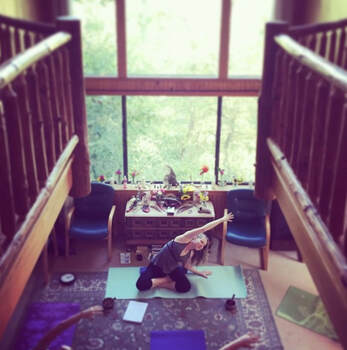 As a therapist, managing my own dance with burnout is one of the most important things I can do to remain trauma-informed in my work with clients. If I am burned out, I can not provide the most quality care and space holding. When people are depleted and burned out, it can be hard to focus, our memory can get impacted and our ability to be tuned into our body's needs can become more difficult. One of my favorite ways to manage my burnout is to have sensory items around me during sessions with my clients. Having sensory objects to hold, see, stand on or place upon my body can help me stay attuned and focused during a session. Sensory tools can help us “keep our lids on”, regulate our vagus nerve and manage our energy so that we do not take on the pain of others. There are so many forms of burnout and I believe these tools can help all forms of burnout (professional, parental, caregiver, etc.) be managed more effectively. My favorite sensory tools include:
There are pros and cons to virtual therapy, but being able to have self-care tools and resources more readily surrounding me has been a huge help to managing the intensity of space-holding during a two year pandemic. I hope you found these tools and tips supportive on your journey. For more trauma-informed and self-care resources, my Ethics of Trauma Informed Care training on April 29th is a virtual live training that will include lifetime access to the recording if you can’t join live. For more information and to reserve your spot, click here. |
AuthorWrite something about yourself. No need to be fancy, just an overview. Archives
April 2024
Categories |

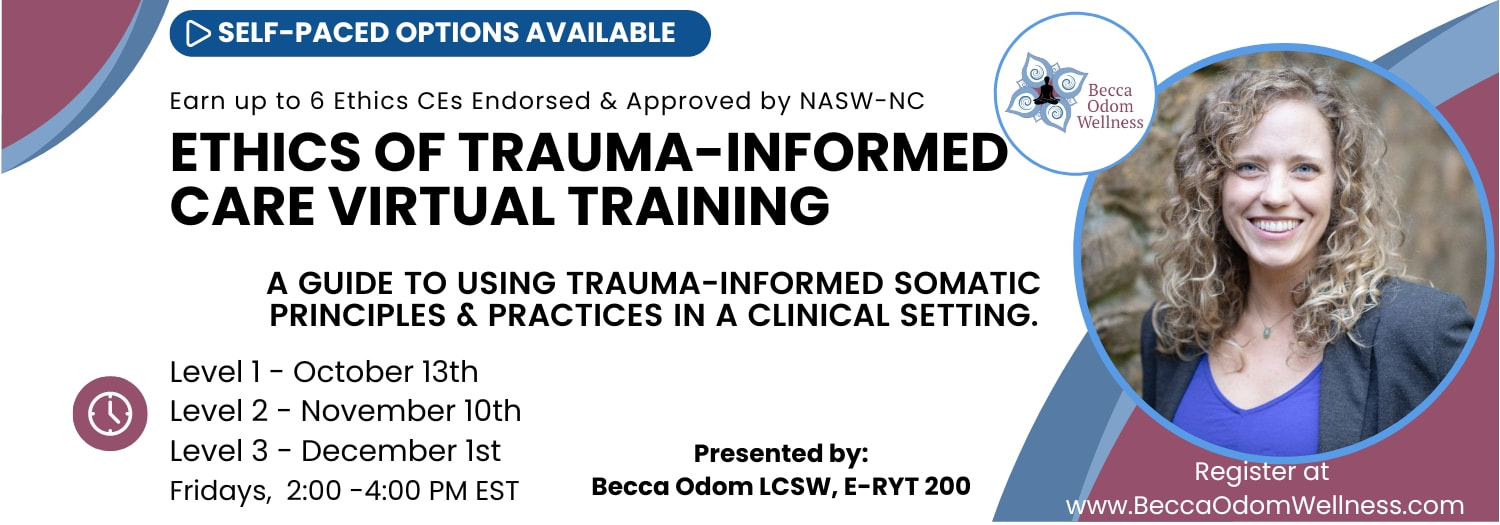
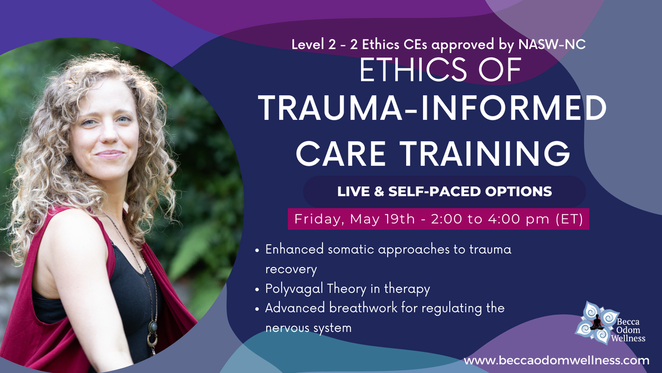
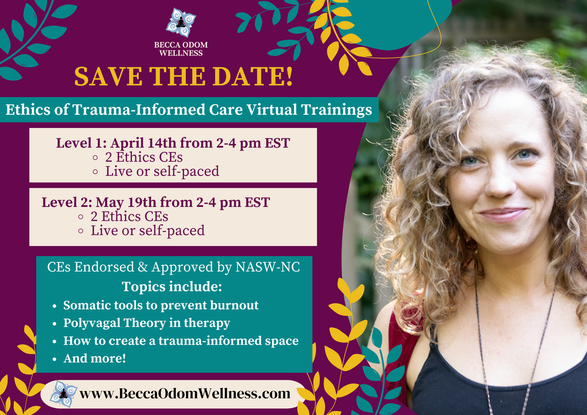
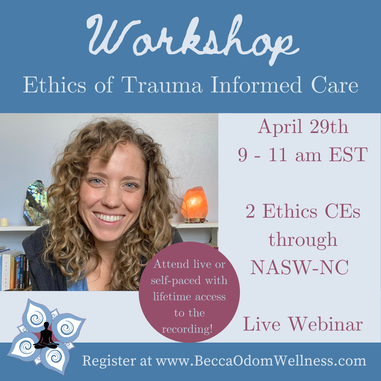

 RSS Feed
RSS Feed